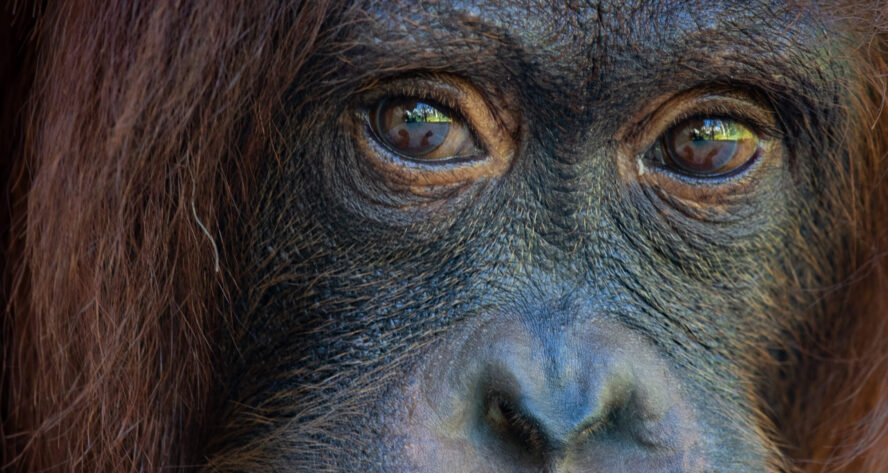

Resources
Orangutan rehabilitation
Rescued orangutans at Sepilok undergo a 5-step rehabilitation programme to increase their chances of returning to the wild.
Orangutans of all ages are rescued and taken to Sepilok Orangutan Rehabilitation Centre. Many are malnourished, dehydrated and some have sustained injuries. Almost all are suffering from severe stress and trauma.

Orangutan infants stay with their mothers for up to 8 years in the wild so any orangutan younger than this found alone and vulnerable has a poor chance of survival. The fortunate ones are rescued and taken to rehabilitation centres, like Sepilok, where they can receive the health care and treatment they need before starting on a journey of rehabilitation which aims to equip them with the life skills they need to have an independent life in the wild.

Step 1
Quarantine
On arrival the orangutans undergo a thorough health check and are quarantined for 3 months. Tiny babies have 1-1 care from a vet nurse who acts as a surrogate mother. Slowly they are introduced to other orangutans who are at the same stage for ‘play sessions’.
Step 2
Indoor nursery
The babies are taken to the indoor nursery where they are still under very close care. This is their ‘Outdoor confidence building’ stage. They are taught to climb, nest-build and are encouraged to forage for food by the carers and older orangutans.
Step 3
Outdoor nursery
The orangutans are transferred to the outdoor nursery. They continue to develop their climbing and foraging skills. They're also monitored for signs of becoming self-sufficient and ready for release.
Step 4
Soft release
The orangutan is brought further into the rainforest for ‘soft release’. They spend 3 days acclimatising to their new surroundings and are slowly introduced to other orangutans who frequent the site. Here we provide supplementary food which is kept very basic to encourage foraging.
Step 5
Independence
Orangutans that show no sign of wanting or needing human support and pass a final health check, are taken deeper into the Kabili Reserve to start their new lives as independent, wild orangutans.
Explore more articles
![Malim]()
Resources
Orangutans and the rainforest
Every orangutan is a precious guardian of the rainforest. By protecting them, we ensure future generations inherit a thriving home.
![Orangutan eyes close up]()
Resources
Why orangutans need our help
Bornean orangutans are critically endangered, facing multiple threats in the wild.
![Home page wheelbarrow]()
Resources
Five ways you can help orangutans
By making small changes you can have a big impact on orangutan conservation!


